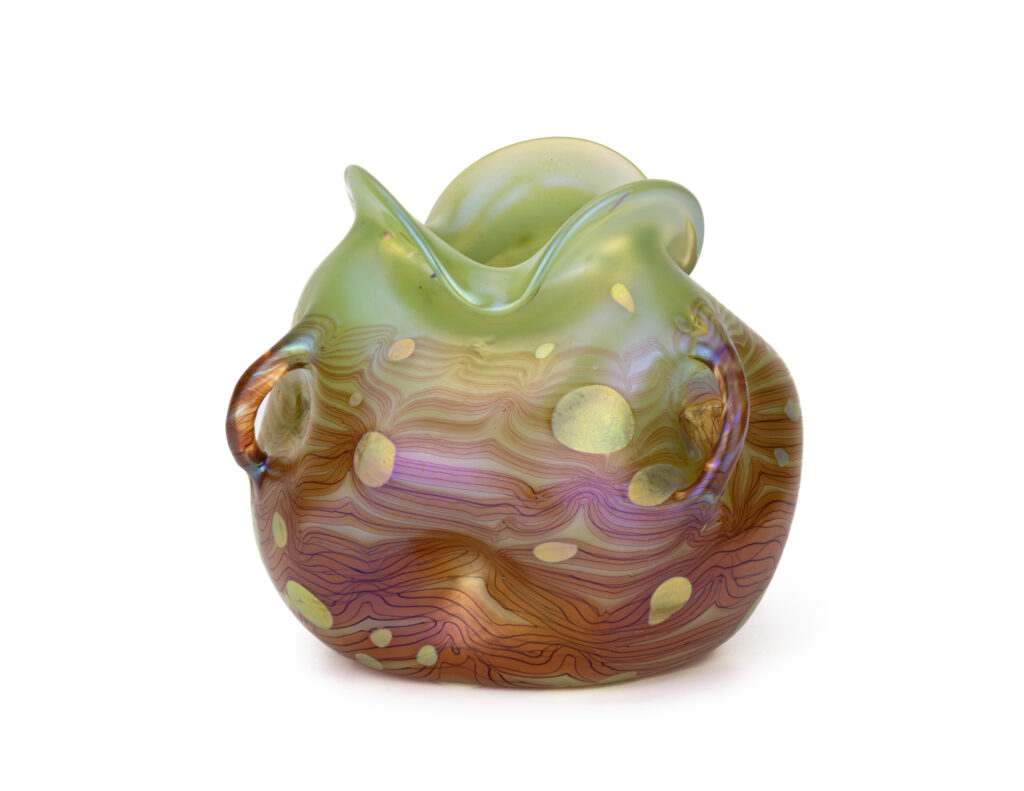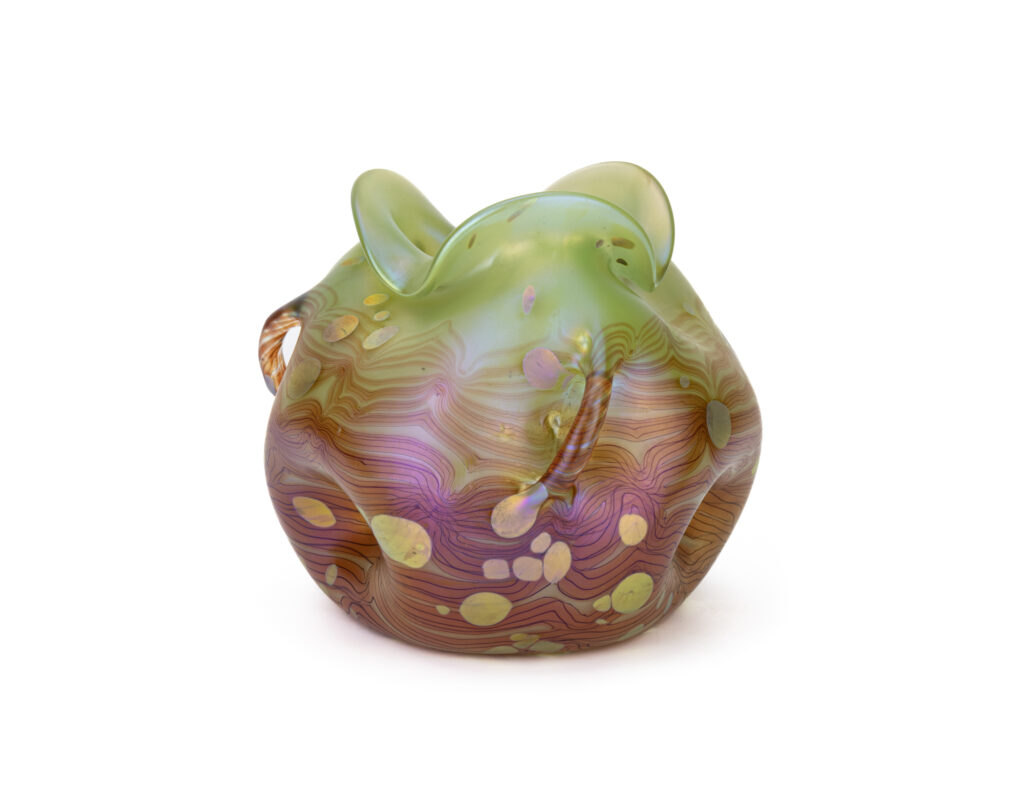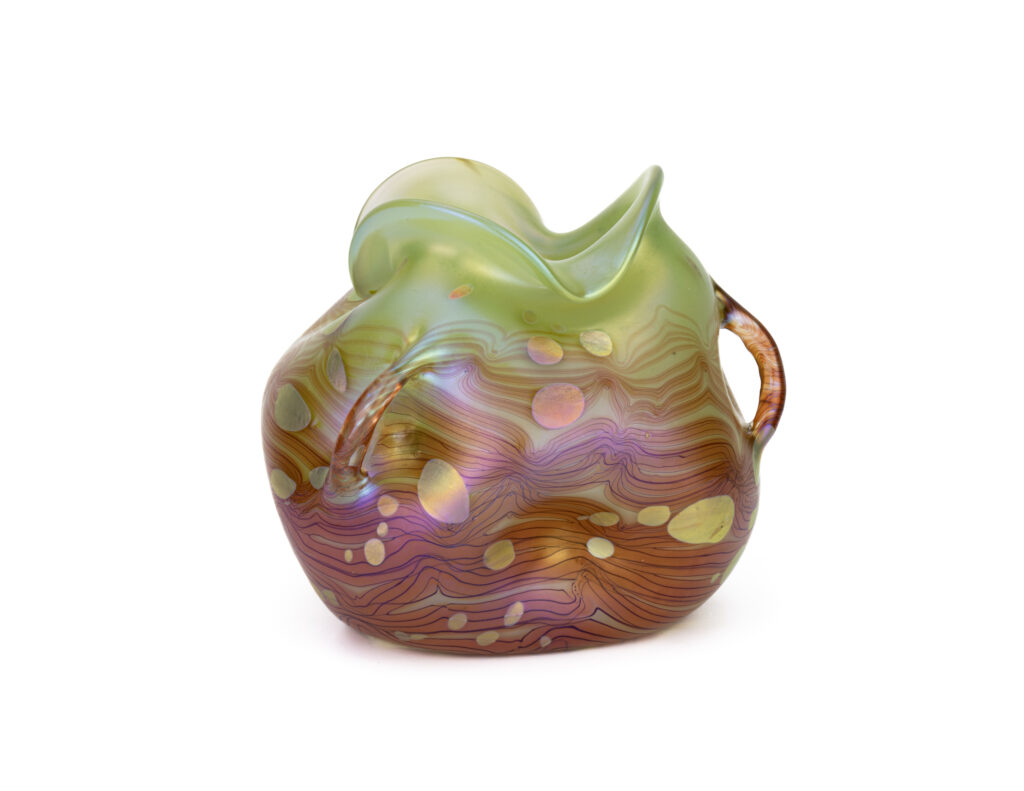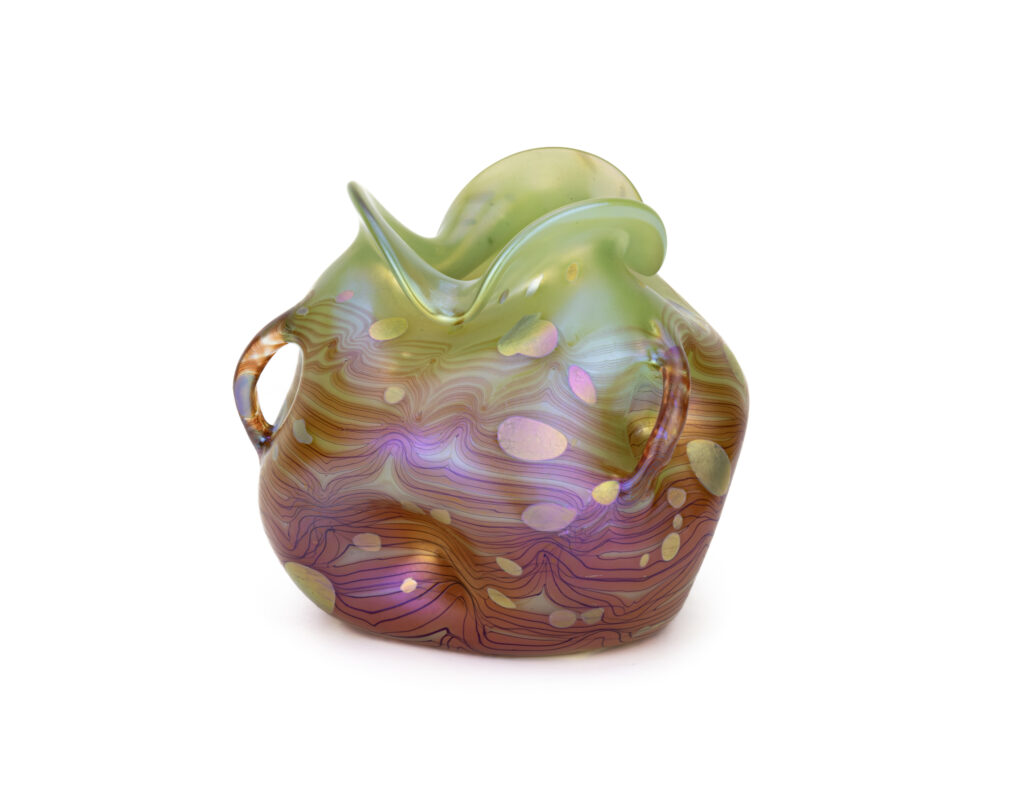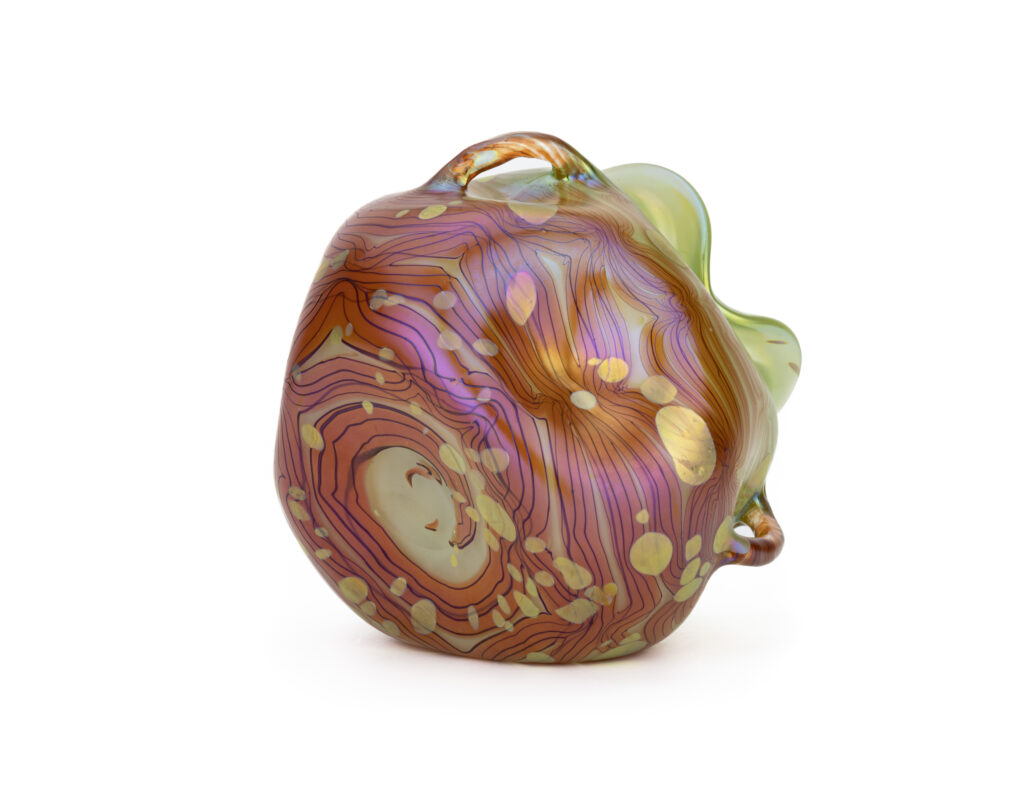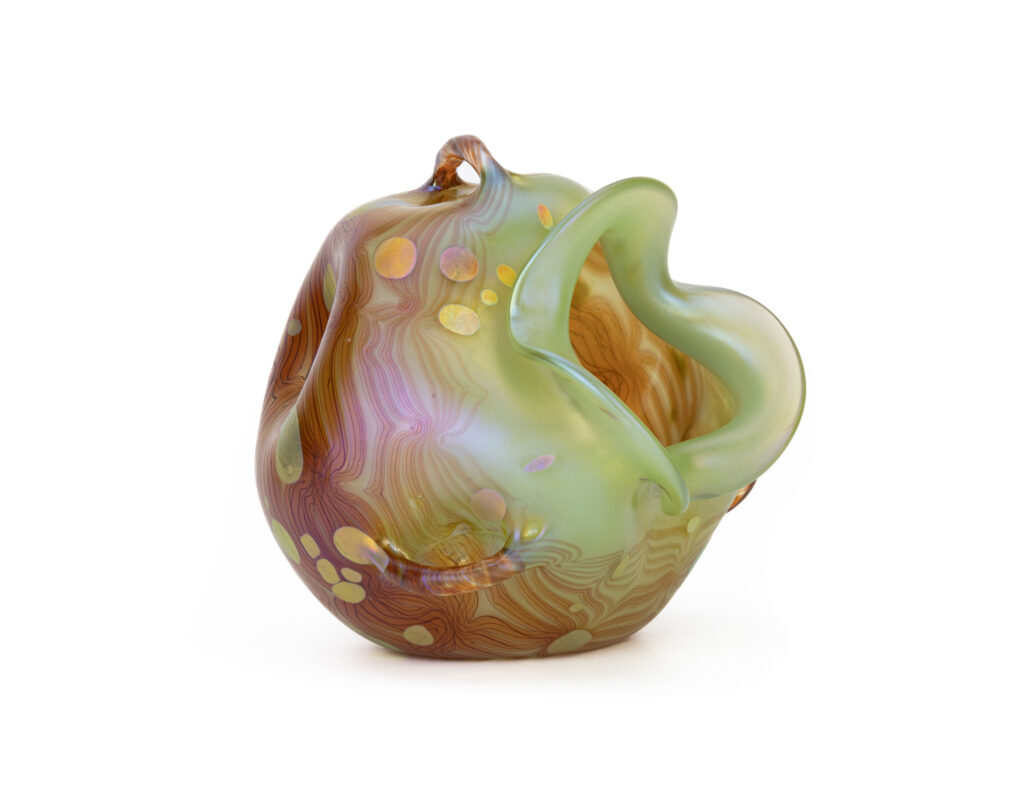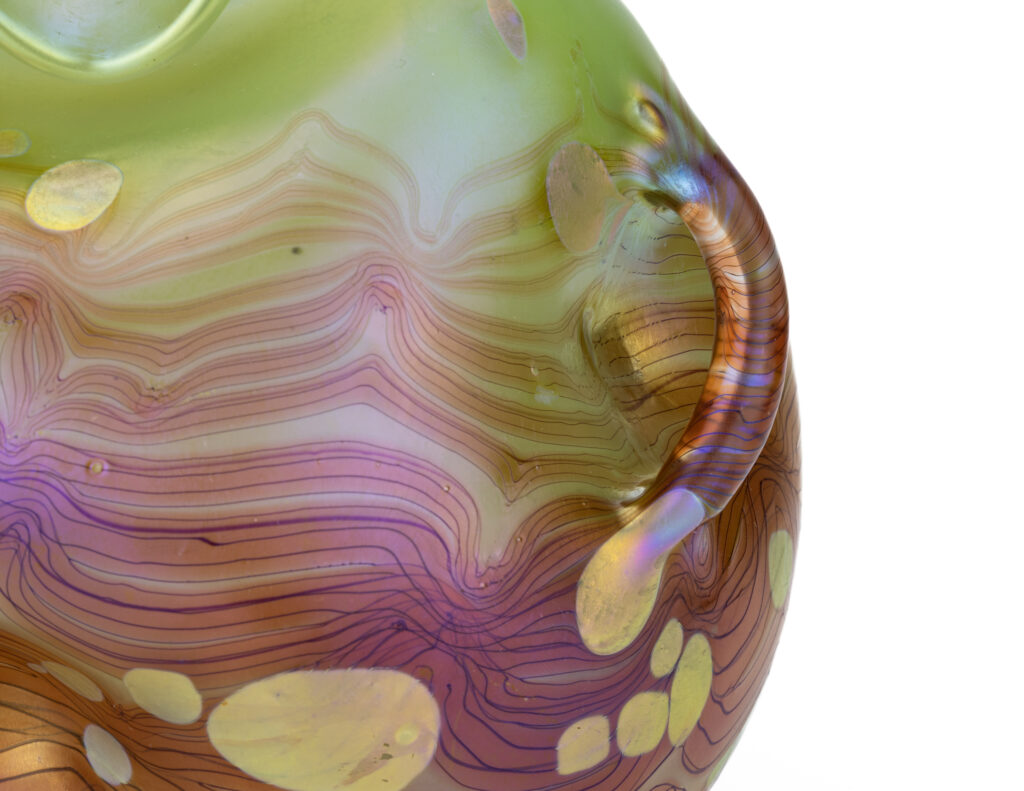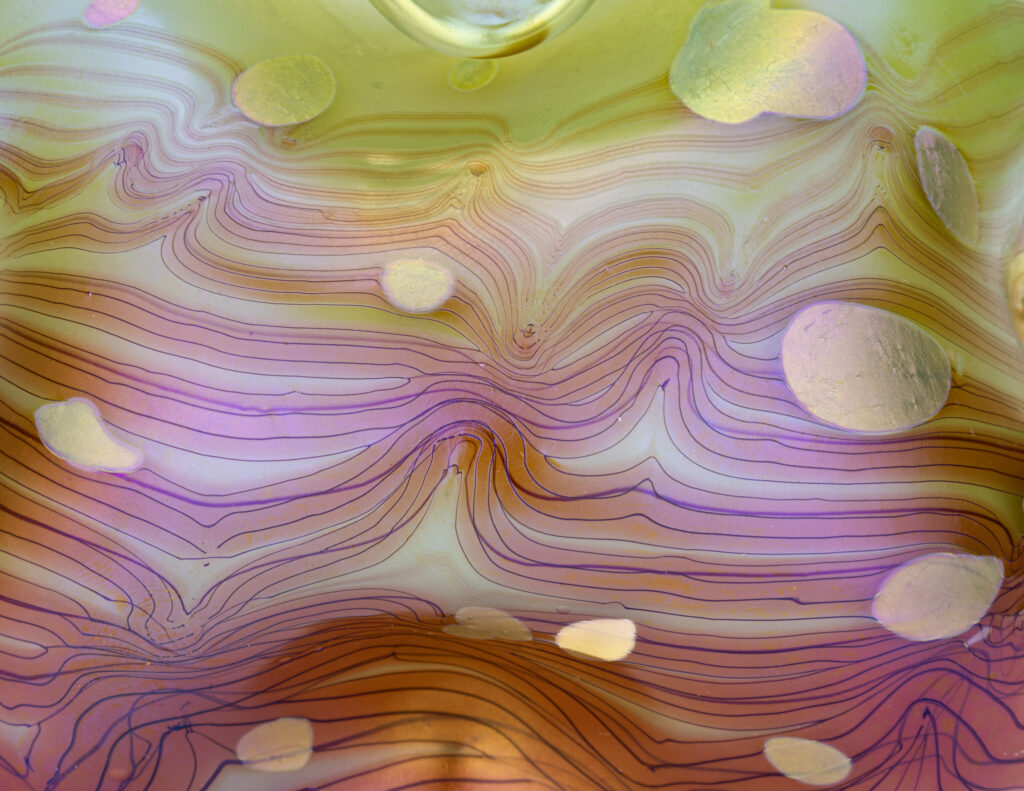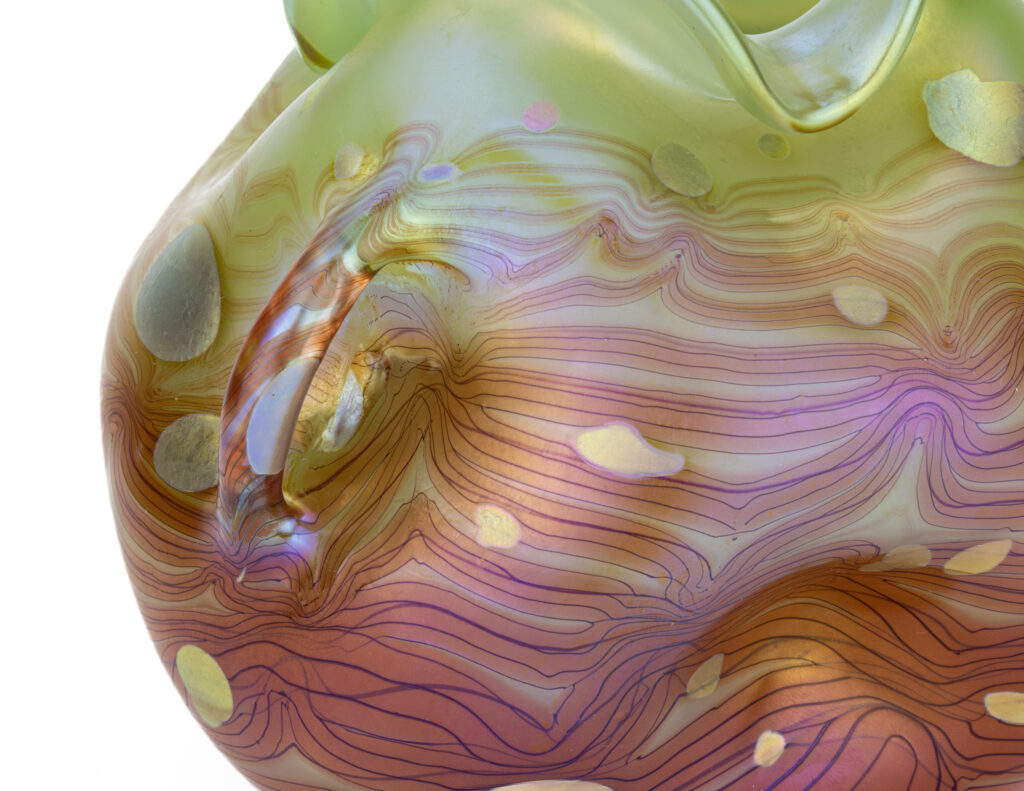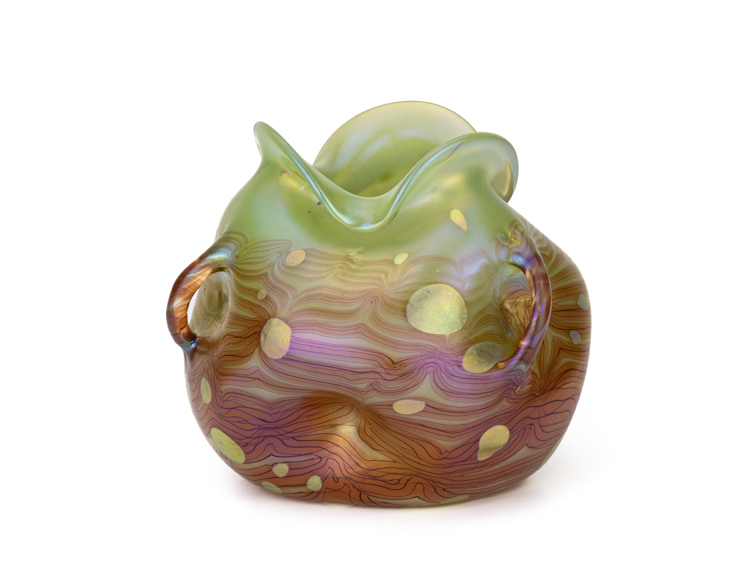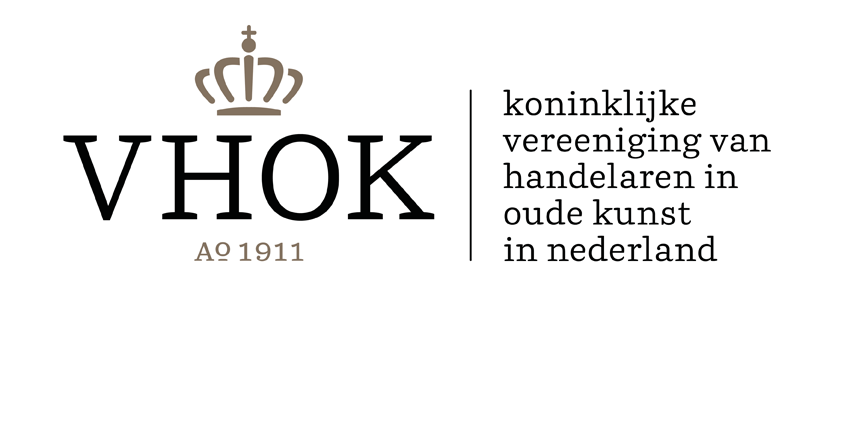Description:
Johann Loetz Witwe – Extruded Handles
This exquisite vase, crafted by Johann Loetz Witwe, represents a stunning example of the Cytisus decor, executed in a vibrant may-green ground color. Produced in 1902, this Jugendstil masterpiece demonstrates Loetz’s mastery of both artistic innovation and technical skill. Bearing the production number Series II 2/622, this vase features the renowned extruded handles, a defining technique pioneered by Loetz.
Under the leadership of Max Ritter von Spaun and artistic director Eduard Prochaska, Loetz became one of the most influential glass manufacturers of the Jugendstil period. Their workshop was famed for experimenting with new techniques, including the Phänomen Genre and extruded handles. The extruded handles, introduced in 1902, involved pulling out glass threads during the blowing process and attaching them to another point on the object. This technique was highly complex and could only be mastered by the most skilled glassblowers. Due to the difficulty of production and the high risk of breakage during the cooling process, very few pieces were produced in large quantities, making them extremely rare and desirable among collectors today.
This particular Cytisus vase, with its may-green iridescent ground color, measures 14.5 cm in height and 16.5 cm in diameter. The molded and free-formed glass, combined with an improved pontil and shimmering iridescence, exemplifies the technical expertise that made Loetz a leader in art glass production. The fragility of these objects, combined with their limited production, has contributed to their scarcity over the past 120 years.
An identical vase, executed in a different ground color can be found in the prestigious Jugendstil collection of Herr Neess, housed in the Museum Wiesbaden. This further highlights the historical and artistic significance of the Cytisus design, which continues to be celebrated by collectors and institutions worldwide.
In outstanding mint condition, with minimal wear at the base, this rare vase represents a perfect blend of artistic vision and technical mastery, embodying the elegance and innovation that defined the Jugendstil movement and the legacy of Johann Loetz Witwe.
